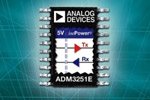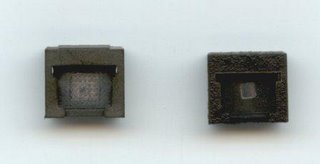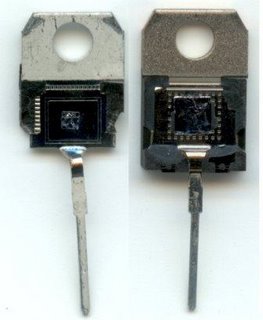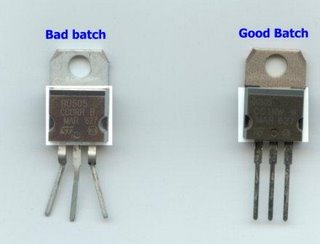Isolated RS-232 Transceiver
 When there are high voltage circuits, such as in a high voltage power supply, and you need to control them via an RS-232 interface, it is usually a good idea to isolate the computer from the analog electronics. Here is information about a new isolated RS-232 transceiver that may be of interest.
When there are high voltage circuits, such as in a high voltage power supply, and you need to control them via an RS-232 interface, it is usually a good idea to isolate the computer from the analog electronics. Here is information about a new isolated RS-232 transceiver that may be of interest.Fully Isolated RS-232 Transceiver Readies For Harsh Environments
Claiming title as the industry’s first fully isolated single-package surface mount RS-232 transceiver with integrated dc/dc converter to supply isolated power, the ADM3251E transceiver integrates a line driver, line receiver, oscillator, rectifier, regulator, voltage doubler, voltage inverter, and transformers into a single chip that isolates both the data and power lines on chip. The transceiver incorporates the company’s iCoupler and isoPower isolation technologies to enable a 2.5 kV isolation rating and it complies with industry-standard isolation regulations including UL1577 and DIN VDE 0884-10. Additionally, the ADM3251E comes in a lead-free, 13 mm × 10.56 mm 20-lead WSOIC surface-mount package. Price is $2.99 each/1,000. Analog Devices, Inc., Norwood, MA. (800) 426-2564.
Claiming title as the industry’s first fully isolated single-package surface mount RS-232 transceiver with integrated dc/dc converter to supply isolated power, the ADM3251E transceiver integrates a line driver, line receiver, oscillator, rectifier, regulator, voltage doubler, voltage inverter, and transformers into a single chip that isolates both the data and power lines on chip. The transceiver incorporates the company’s iCoupler and isoPower isolation technologies to enable a 2.5 kV isolation rating and it complies with industry-standard isolation regulations including UL1577 and DIN VDE 0884-10. Additionally, the ADM3251E comes in a lead-free, 13 mm × 10.56 mm 20-lead WSOIC surface-mount package. Price is $2.99 each/1,000. Analog Devices, Inc., Norwood, MA. (800) 426-2564.
Labels: high voltage isolators, isolation



